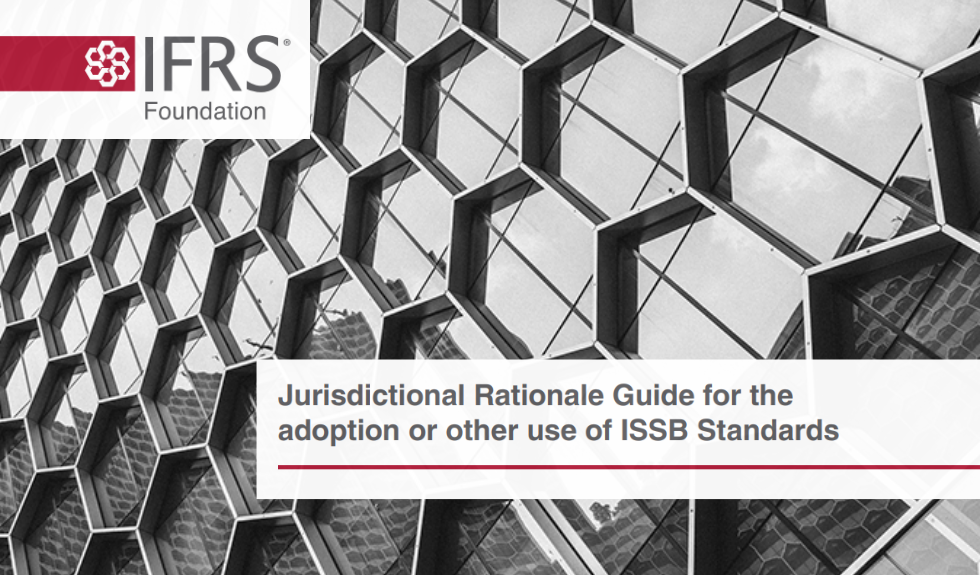A Global Passport for Sustainability Disclosure: ISSB’s New Regulatory Initiative
In the evolving regulatory landscape of sustainability reporting, the role of ISSB Standards continues to expand. Recent developments led by the IFRS Foundation signal a move beyond standard-setting toward enabling practical adoption across jurisdictions. A new initiative now aims to clarify how these standards can be positioned within diverse legal and policy systems to support globally consistent disclosure practices.

The IFRS Foundation has taken a significant measure toward enabling the International Sustainability Standards Board (ISSB) Standards to serve as a “global passport” for sustainability-related disclosures. Announced during the IFRS Sustainability Symposium in London last week, the initiative reflects the growing momentum behind the international alignment of sustainability reporting requirements. Its key goal is to reduce regulatory fragmentation by enabling jurisdictions to either adopt the ISSB Standards fully or allow their use alongside local frameworks, thus increasing global comparability and reducing duplication.
Strategic Shift in the Role of ISSB Standards
A central element of the announcement is the expansion and strengthening of the Jurisdictional Adopters Working Group. This working group will provide space for regulators and policymakers to explore the mechanisms by which ISSB Standards can be implemented, recognised, or referenced within local legal systems. The IFRS Foundation is explicitly supporting this dialogue through two newly released implementation tools: the Jurisdictional Rationale Guide and the Jurisdictional Rationale Tool. These resources are designed to assist jurisdictions in evaluating whether and how to adopt the ISSB Standards.
Framing the Rationale: Markets, Preparers and Policy Objectives
The Jurisdictional Rationale Guide, compiled from public consultations, regulatory strategies, and international policy statements, outlines three principal categories of benefit. The first is the enhancement of capital markets. Jurisdictions cite improved transparency, investor confidence, and cross-border capital flow as compelling drivers. Second is the benefit to reporting entities themselves. Using a globally recognised standard may reduce the complexity and cost of complying with multiple frameworks. The third relates to jurisdiction-level benefits from leveraging the global baseline, including alignment with broader policy objectives such as climate transition, financial stability, and sustainable finance.
This rationale is not abstract. The guide presents examples from nearly 40 jurisdictions, many of which are already embedding ISSB Standards into their disclosure architecture. Policymakers increasingly cite international comparability as essential for investor trust, while market regulators stress the need for coherent disclosure systems across asset classes.
From Insight to Action: Operationalising Policy Decisions
While the Guide offers an evidence base, the Jurisdictional Rationale Tool translates those insights into a structured decision-making process. The Tool assists jurisdictions in formulating a tailored rationale by assessing potential outcomes across capital market integrity, efficiency for preparers, and alignment with broader sustainability and economic goals. It includes decision tables and worksheets that prompt regulators to identify which benefits are most relevant to their local market and policy environment.
This practical instrument supports jurisdictions not only in justifying the use of ISSB Standards but also in integrating them strategically into broader regulatory objectives. Furthermore, it complements other IFRS resources such as the Readiness Assessment Tool and the Roadmap Development Tool, positioning the Rationale Tool as an integral part of a broader implementation framework.
Implications for the Sustainability Disclosure Landscape
By framing the ISSB Standards as a global passport, the IFRS Foundation is promoting a model of interoperability. This does not necessarily require full regulatory harmonisation but encourages a level of mutual recognition that can simplify the landscape for both preparers and users of sustainability information. Jurisdictions will retain flexibility, yet benefit from anchoring their frameworks to an international reference point.
For reporting entities, this development offers the potential for significant efficiency gains. Preparing one core set of sustainability disclosures that can meet multiple regulatory needs aligns with the market’s long-standing demand for standardisation. For policymakers, the tools and rationale frameworks provide a pathway to develop coherent, forward-looking sustainability disclosure policies that are both context-sensitive and globally relevant.
Conclusion: A Structured Path to Global Coherence
The IFRS Foundation’s initiative marks a shift in the implementation strategy for ISSB Standards, from technical standard-setting to strategic global adoption. The combination of a strengthened multilateral working group and the publication of decision-support tools creates a clear infrastructure for jurisdictions seeking to adopt or otherwise use ISSB Standards. As sustainability reporting moves further into the regulatory mainstream, such mechanisms will be essential in building a coherent, comparable, and efficient global disclosure environment.



